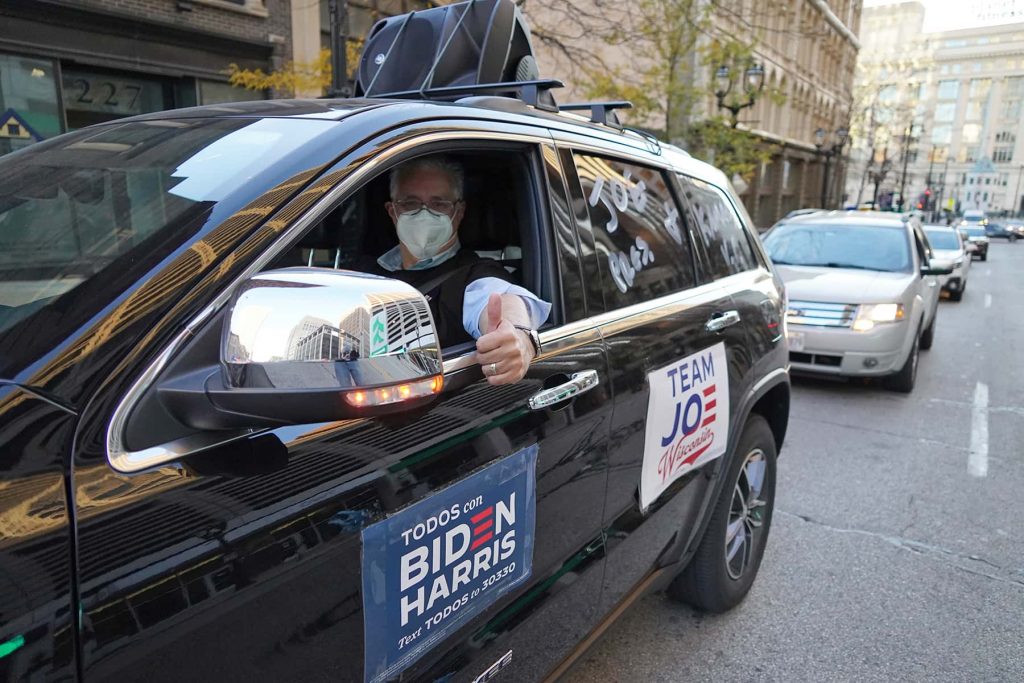
By Chris Knoester, Associate Professor of Sociology, The Ohio State University; Richard J. Petts, Professor of Sociology, Ball State University; and Joya Misra, Professor of Sociology & Public Policy, University of Massachusetts Amherst
The United States is the only wealthy nation that does not guarantee paid leave to mothers after they give birth or adopt a child. The vast majority of Americans would like to see that change.
According to a YouGov poll of 21,000 people conducted between March 25 and April 1, 2021, 82% of Americans think employees should be able to take paid maternity leave, including for adoption. That level of support makes this benefit about as popular as chocolate. In fact, more Americans want to see paid parental leave in place than would like the government to refrain from cutting their Social Security benefits.
President Joe Biden’s proposed US$1.8 trillion package of new and expanded benefits, which requires congressional approval, would eventually make it possible for all workers to take up to 12 weeks of paid family leave totaling as much as $4,000 per month. This leave would be for mothers and fathers alike, as well as caring for yourself or another loved one. As scholars who have extensively studied paid leave, we have been struck by the persistence of Americans’ positive attitudes toward this benefit.
In our newly released study Attitudes about Paid Parental Leave In the U.S. based on data from 2012, 82% of Americans supported parents receiving paid leave – a proportion that’s identical to the recent YouGov poll. Repeatedly, since then, polls have found that at least 80% of Americans support paid maternity leave. In an era of extreme political polarization, it is astounding that so many Americans can agree on anything. Strong support is even apparent across the political spectrum: 73% of Republicans, 83% of independents and 94% of Democrats back the policy.
Nine states and Washington, D.C. have their own paid family leave programs, and federal workers got paid leave in 2020. But only 21% of U.S. workers can take paid parental leave. The lack of a federal paid leave policy that covers all employees results in the current patchwork of different policies that are difficult to understand and generally not available to most families.
Our research suggests that one reason why paid leave policies have not been more widespread in the U.S. is that Americans are hesitant to support government programs that may require tax hikes. For instance, slightly fewer than half of Americans endorsed using some government funding for paid leave in 2012. Yet, there is evidence that this resistance has been fading, and employers are becoming more supportive of these policies as well.
Support for paid leave for fathers used to be relatively low. About 50% of Americans, for example, endorsed paid leave for fathers in the 2012 survey data we reviewed. With more active fathering gaining popularity since then, support for paid paternity leave has been rising. Sixty-eight percent of those surveyed by YouGov in early 2021 backed paid leave for moms and dads alike.
Years of research underscores the benefits of paid maternity leave for women and their families. Our research has demonstrated that when fathers take paternity leave, they tend to develop better relationships with their kids and partners, become more actively involved in parenting and get divorced less frequently.
Given that Americans have wanted paid leave for a long time and its benefits are increasingly clear, we believe that a national paid leave policy that covers all parents is an important step to improving the quality of life in America.
How much of a change would this be?
Joya Misra: Federal law currently guarantees many employed Americans the right to take up to 12 weeks of unpaid job-protected leave to care for family members through the Family and Medical Leave Act. Because of eligibility restrictions, less than half of all U.S. workers can technically access this benefit. Even fewer of those who are eligible can afford to take advantage of it. The U.S. is truly exceptional in this regard. Employed women get paid maternity leave in almost every nation in the world. Many countries also provide workers with paid leave to care for their ailing parents, partners or other relatives who need care, which is what the Biden administration is proposing. Nine states, including California and Connecticut, and the District of Columbia already offer some form of paid family leave. Their track records provide strong evidence regarding the advantages of paid – as opposed to unpaid – family leave.
How would Biden’s paid leave plan benefit workers?
Joya Misra: When workers need to care for a family member with an illness, or a new child, they often find themselves out of a job. Researchers have found that the lack of paid leave leads to at least $20.6 billion in lost wages per year. Paid family leave especially helps low-income U.S. workers stay employed when they need it most. In states that fund paid leave, women are 20% less likely to quit their jobs after having a baby. Only 16% of Americans with private sector jobs currently get paid leave through their employer; most of them work for big companies like Facebook and American Express. Some public-sector workers, but not all, can access paid leave, including those benefiting from a federal paid parental leave policy adopted in October 2020. Many employees who can technically take unpaid leave can’t do that without experiencing financial hardship. In states with paid leave, evidence suggests that those policies make it easier for workers to financially weather a birth, an adoption or a short-term health crisis.
How would employers benefit?
Joya Misra: Researchers have found that paid leave is good for business. It increases worker retention, productivity and loyalty, while also allowing smaller businesses to compete more fairly with big companies. Public opinion polls and surveys have long found that most Americans, including small-business owners, support paid family leave. For example, nearly all businesses surveyed about the effects of the California paid leave program, adopted in 2004, said that the program had either a positive effect or no noticeable impact on productivity, profits, retention and morale. Employee turnover fell in California once it enacted its paid leave policy. Other states have seen similar results. One year after Rhode Island adopted paid leave in 2018, most employers there supported the policy. New York employers are also enthusiastic, partly because paid leave makes it easier to deal with employee absences. In New Jersey, most employers said they experienced no change in their profits, performance or productivity after the adoption of that state’s paid leave policy, which they say was easy to implement. U.S. workforce participation has been decreasing for years, especially for women. Comparing the United States to Canada, some researchers estimate that with more access to paid leave and affordable child care, as many as 5 million more workers could enter the U.S. labor force – boosting the economy.
Is the Biden administration’s estimate of the cost realistic?
Joya Misra: The Biden administration estimates that its proposed paid leave program will cost $225 billion over the next decade. I think that this is a reasonable expectation, as state-based paid leave programs have not been very expensive. In most states, paid family leave has been funded through employee payroll taxes, though some states jointly fund the program between employees and employers. Funding through a payroll tax spreads the cost across millions of workers and employers. However, at this point, Biden seeks to fund this program and others through taxes on people who earn more than $400,000 per year and corporations. The nonprofit National Partnership for Women and Families estimates that someone earning the median U.S. income, currently around $36,000 per year, would pay about $1.48 per week, or $76.85 annually, to fund this program. In Massachusetts, where I live, workers pay no more than 38 cents per every $100 that they earn to fund paid the state’s paid leave program. Self-employed workers can opt into this system.
How much family leave is parental versus for other kinds of care?
Joya Misra: In California, about half of all paid family leave claims are for new mothers, about one-third are for new fathers and the rest involve care for other family members – a seriously ill older child, a parent or in-law, grandparent, grandchild, sibling, spouse or registered domestic partner. Providing paid leave for new parents could have a big impact, as currently most U.S. women lack paid maternity leave and even fewer men can take time off to welcome a new baby. That’s unfortunate, in my view, because paid leave is associated with better health outcomes for both mothers and children, less stressed families, greater connection to employers and greater economic security for working families. I believe that federal paid leave to care for relatives is crucial, given the aging population in the U.S. and the growing number of workers who need time off to care for aging family members. With 1 in 5 adults caring for another adult, many of whom are shouldering financial burdens as a result, a federal paid family leave policy would make a big difference.
Originally published on The Conversation as 82% of Americans want paid maternity leave – making it as popular as chocolate and How Biden’s paid leave proposal would benefit workers, their families and their employers too
Support evidence-based journalism with a tax-deductible donation today, make a contribution to The Conversation.















